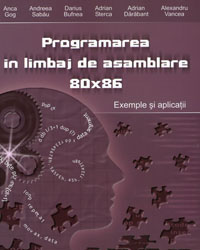Programarea in limbaj de asamblare 80×86
Autori: Anca Gog, Andreea Sabau, Darius Bufnea, Adrian Sterca, Adrian Darabant, Alexandru Vancea Titlu: Programarea in limbaj de asamblare 80×86 Editura: Risoprint Anul aparitiei: 2005 ISBN: 973-651-006-2 Pagini: 400
